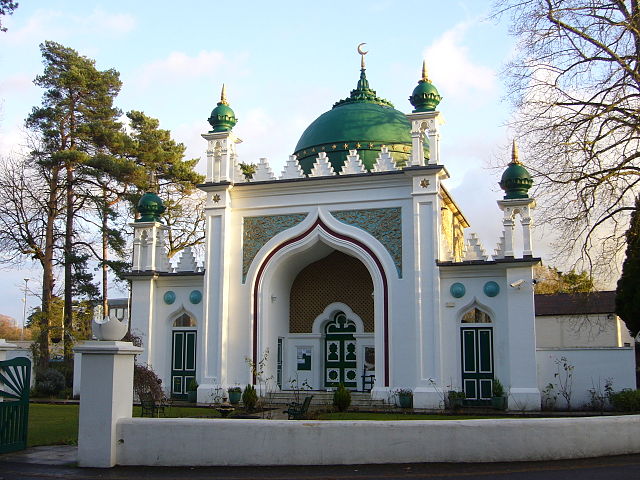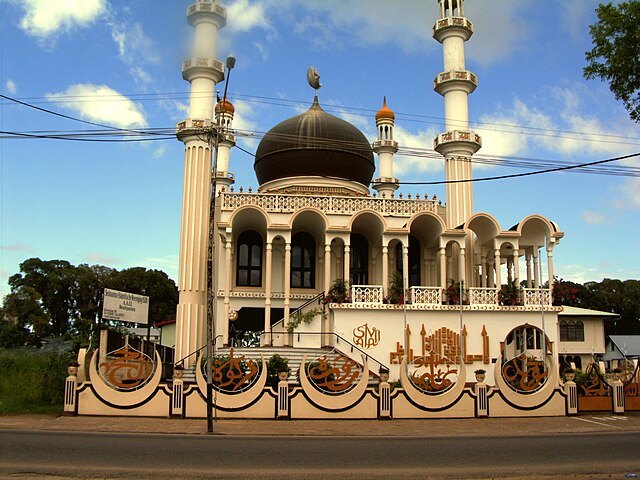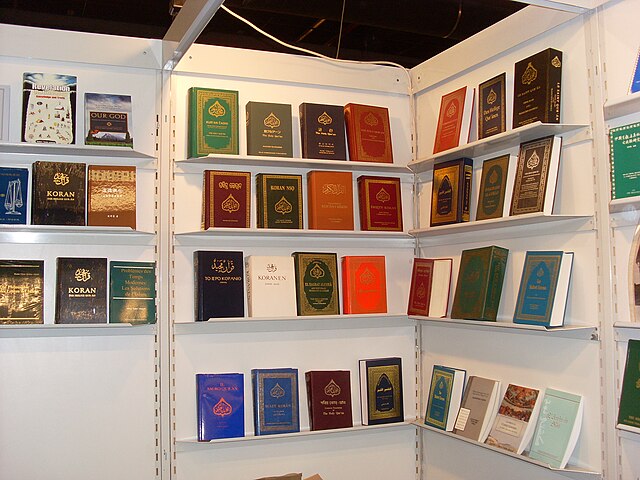Lahore Ahmadiyya Movement
The Lahore Ahmadiyya Movement for the Propagation of Islam, is a separatist group within the Ahmadiyya movement that formed in 1914 as a result of ideological and administrative differences following the demise of Hakim Nur-ud-Din, the first Caliph after Mirza Ghulam Ahmad. Members of the Lahore Ahmadiyya movement are referred to by the majority group as ghayr mubāyi'īn and are also known colloquially as Lahori Ahmadis.
The Shah Jahan Mosque in Woking, temporarily run by the “Lahore Ahmadiyya Movement” from 1914 until the mid-1960s, remained the main centre of Islam in Britain throughout the early 20th century.
Maulana Muhammad Ali led the Lahore Ahmadiyya Movement as Amīr from 1914 to 1951
The Berlin Mosque in 2008
Mosque Keizerstraat in Suriname
Ahmadiyya, officially the Ahmadiyya Muslim Jama'at (AMJ) is an Islamic messianic movement originating in British India in the late 19th century. It was founded by Mirza Ghulam Ahmad (1835–1908), who said he had been divinely appointed as both the Promised Mahdi and Messiah expected by Muslims to appear towards the end times and bring about, by peaceful means, the final triumph of Islam; as well as to embody, in this capacity, the expected eschatological figure of other major religious traditions. Adherents of the Ahmadiyya—a term adopted expressly in reference to Muhammad's alternative name Aḥmad—are known as Ahmadi Muslims or simply Ahmadis.
The White Minaret and the Ahmadiyya flag in Qadian, India. For Ahmadi Muslims, the two symbolize the advent of the Mirza Ghulam Ahmad.
The Shahada, outside the Mahmood Mosque in Zurich, proclaiming the oneness of God.
Some of the many Quran translations by Ahmadi translators at the 2009 Frankfurt Book Fair
Roza Bal shrine in Srinagar, Kashmir








